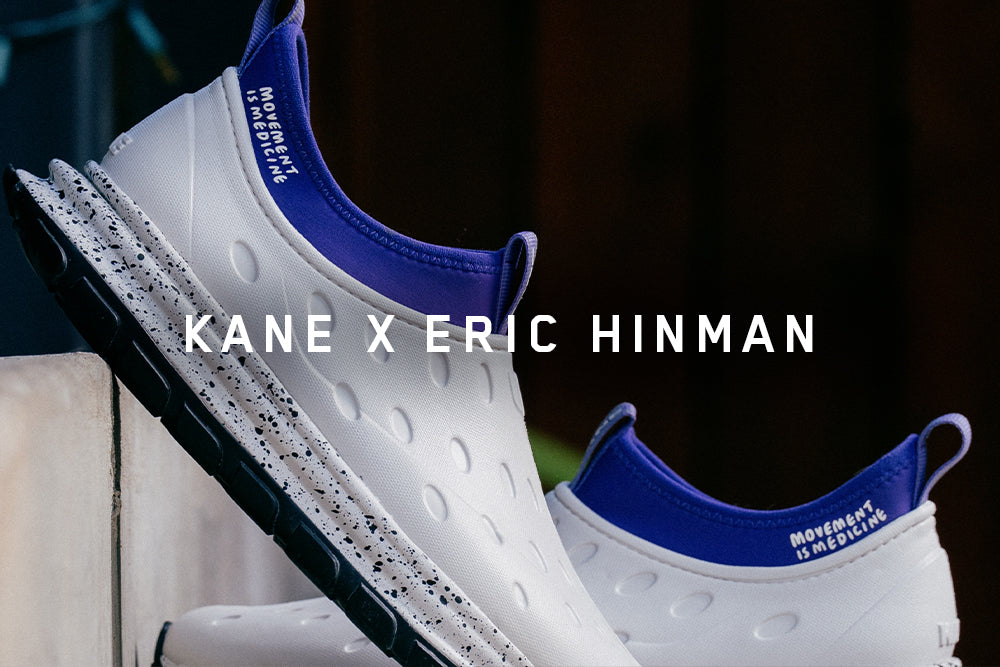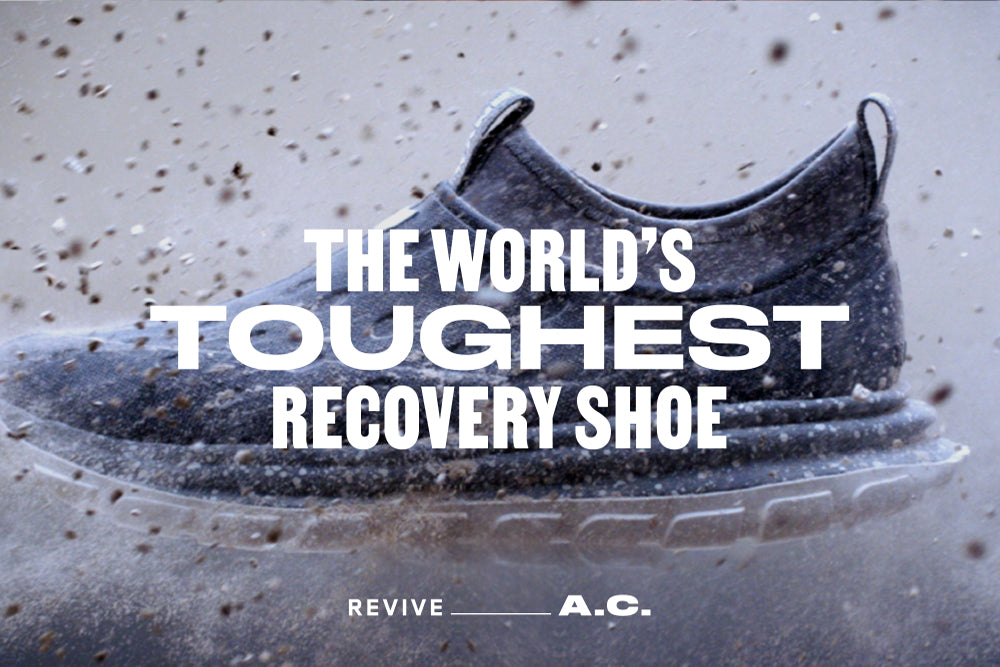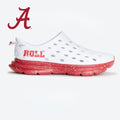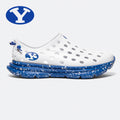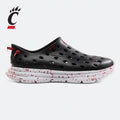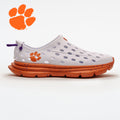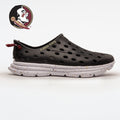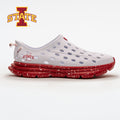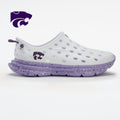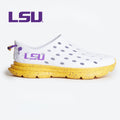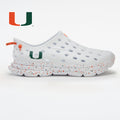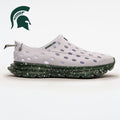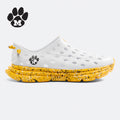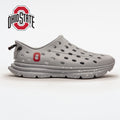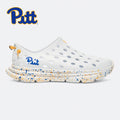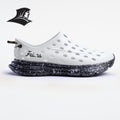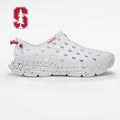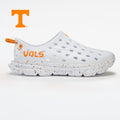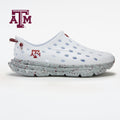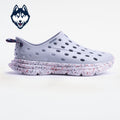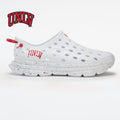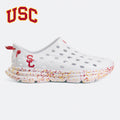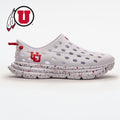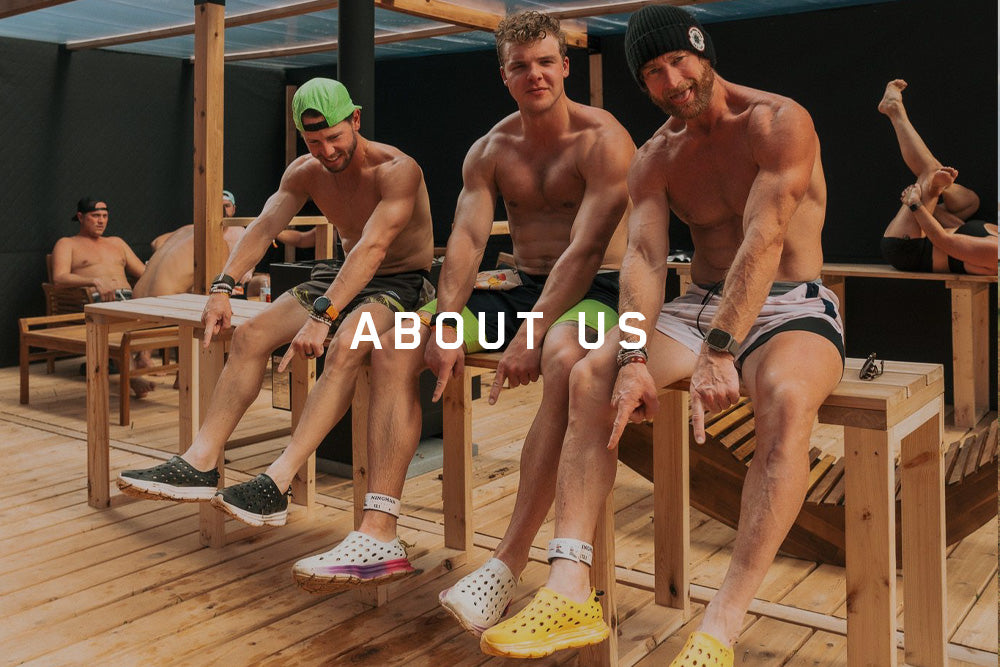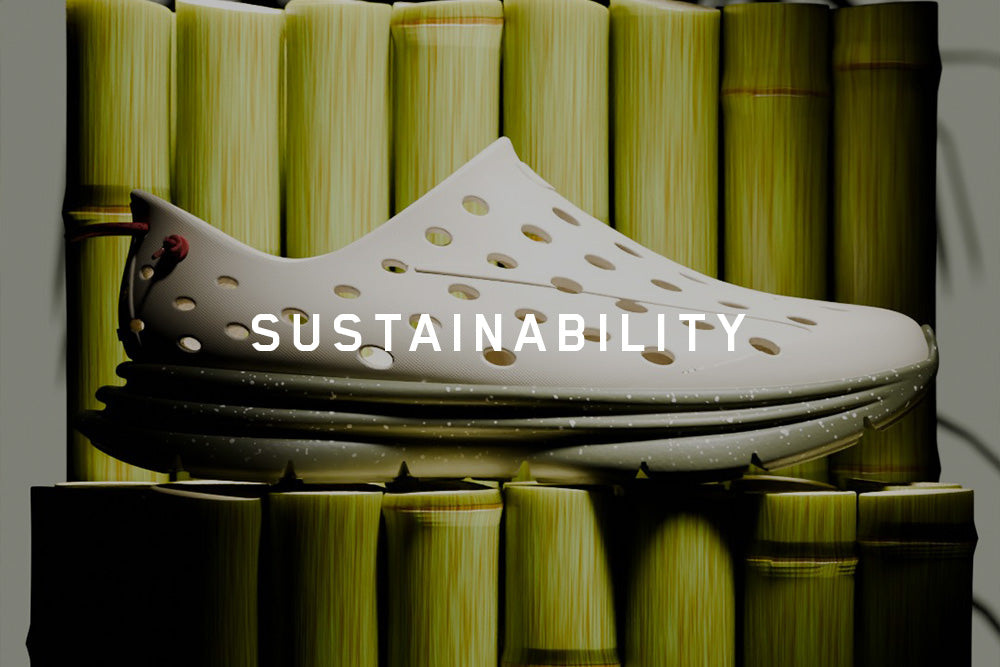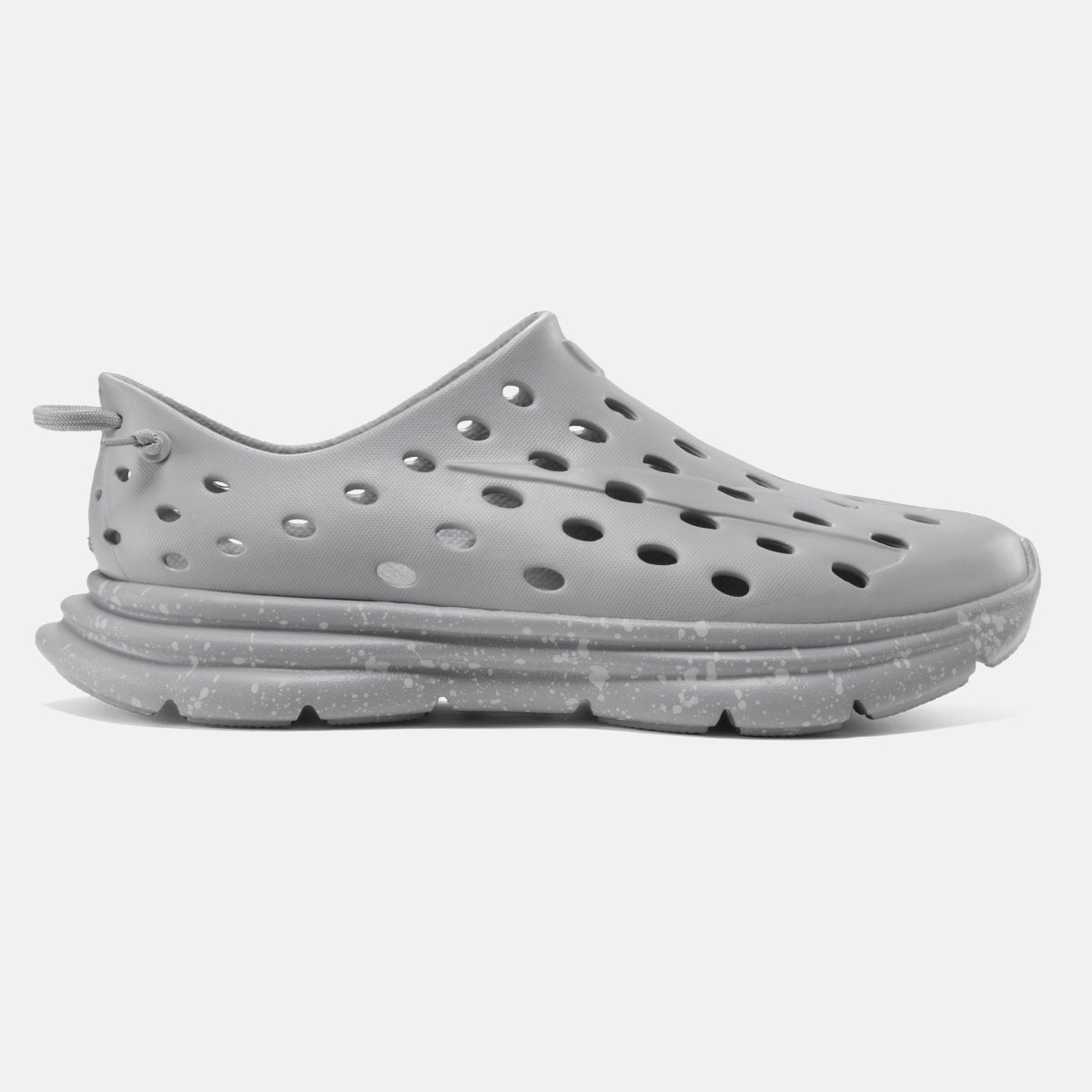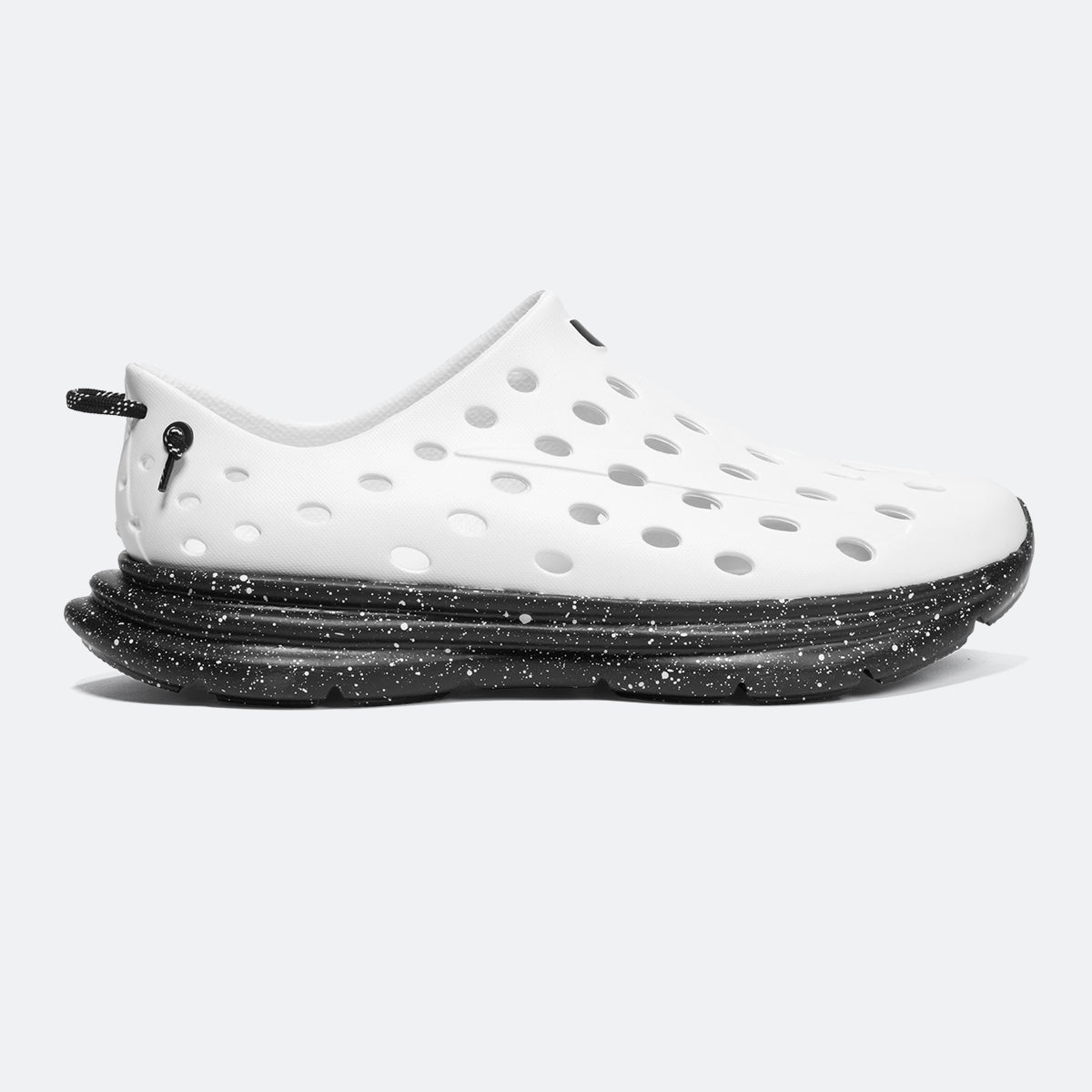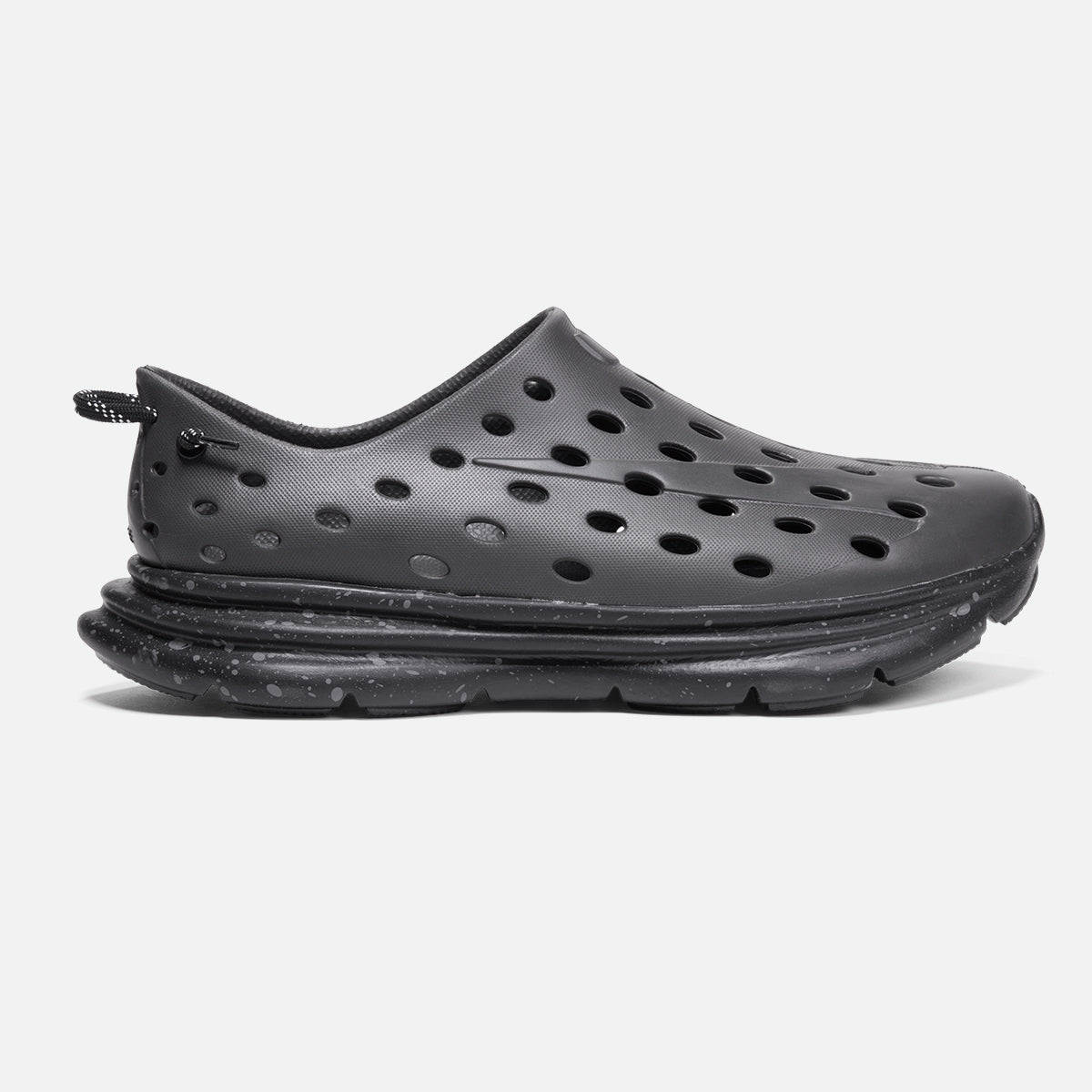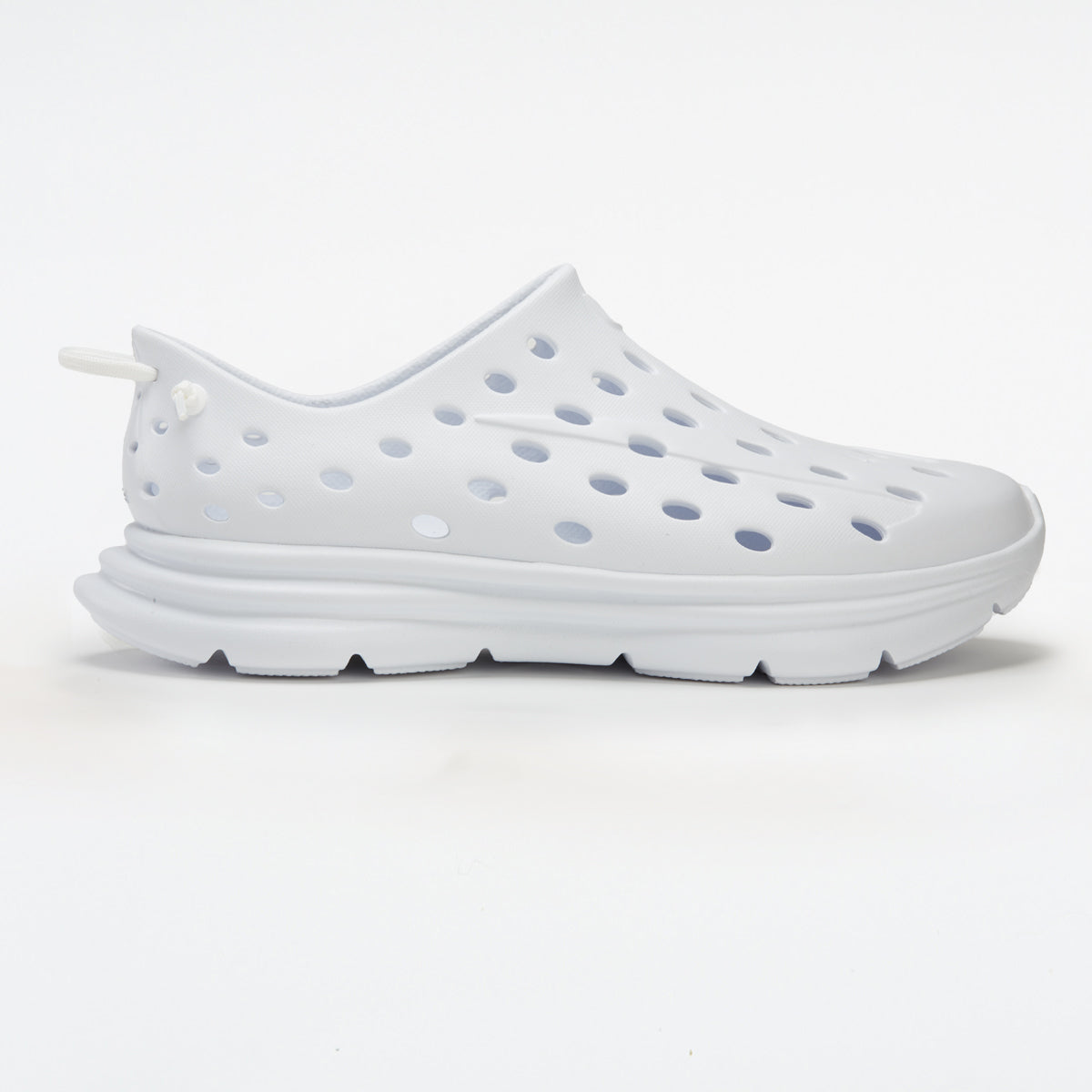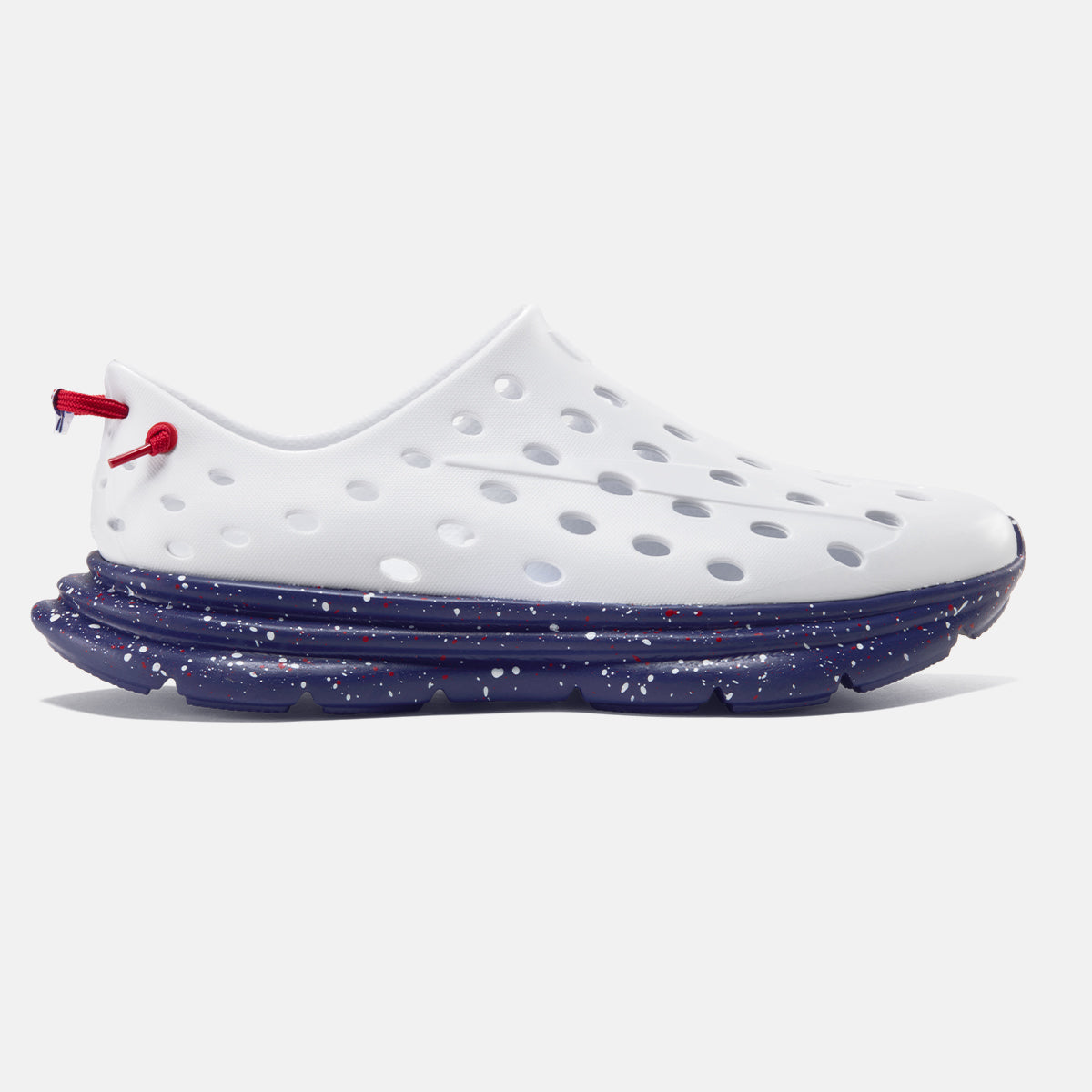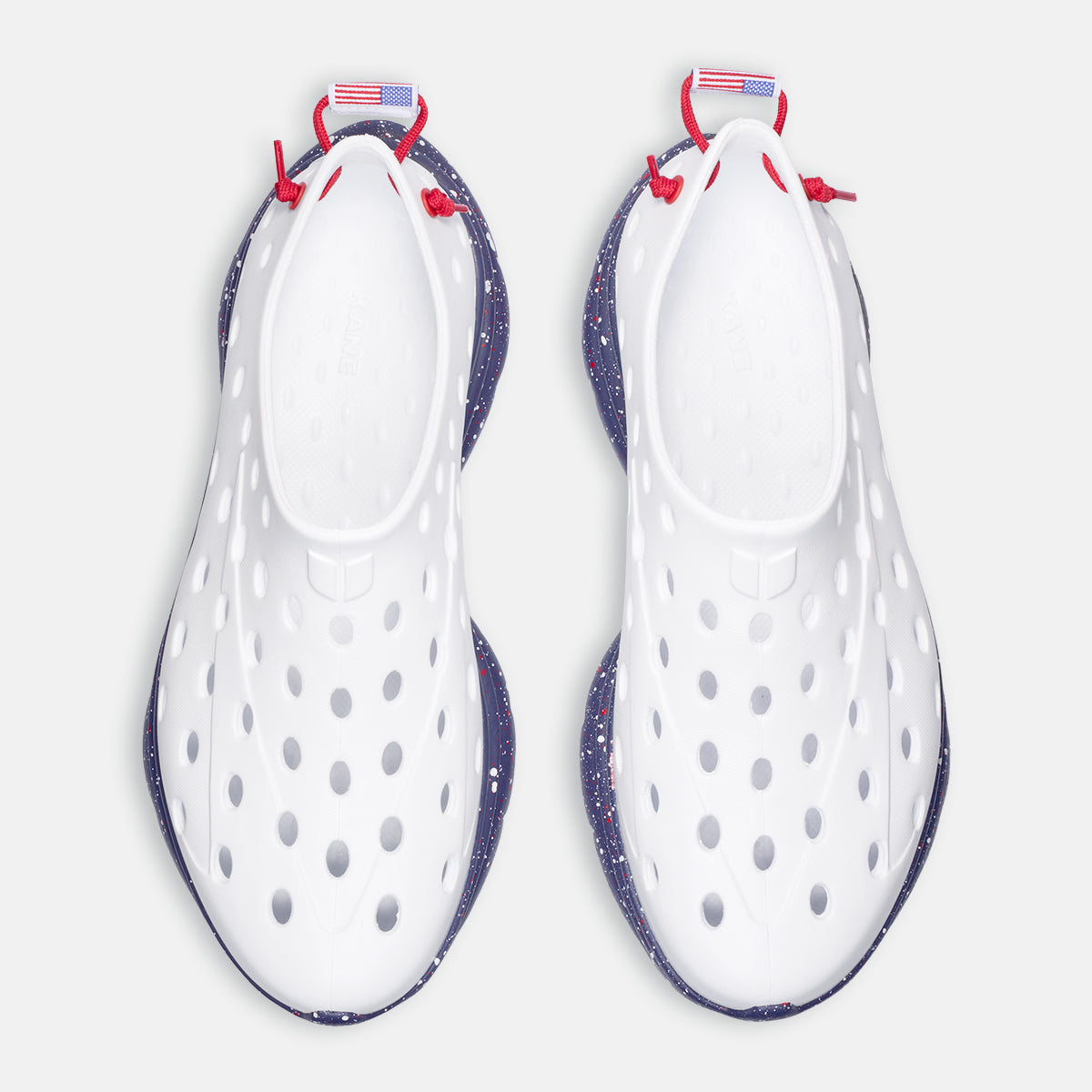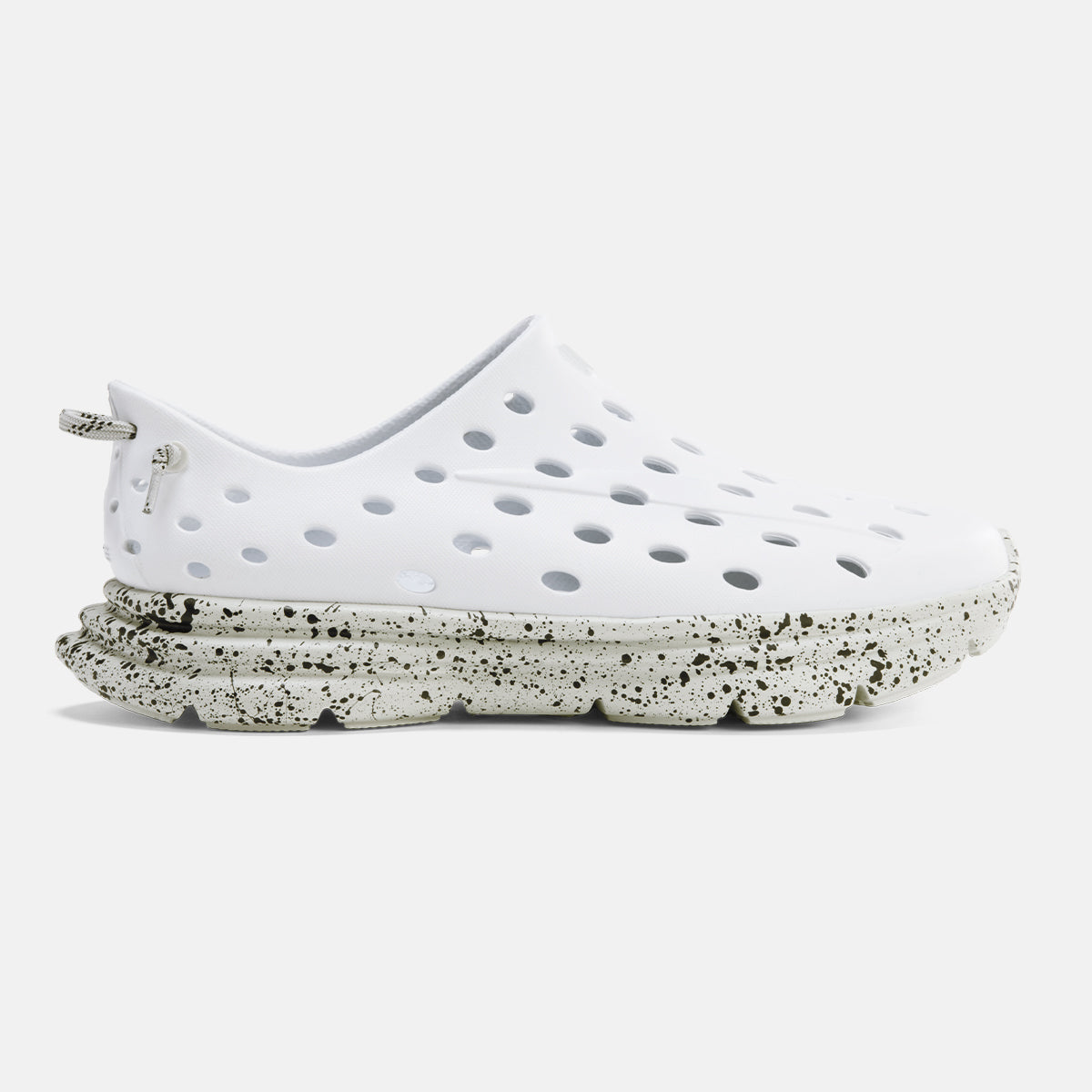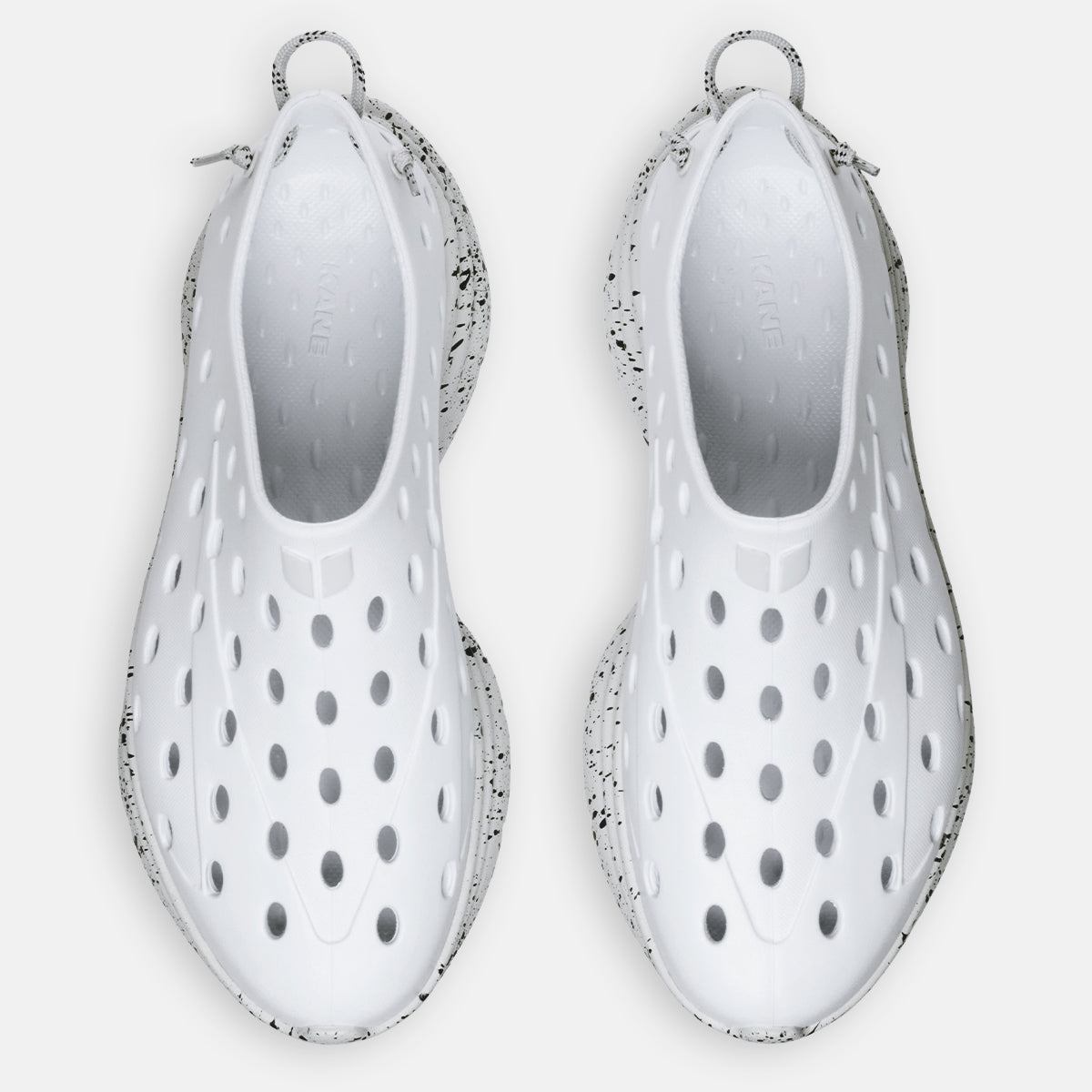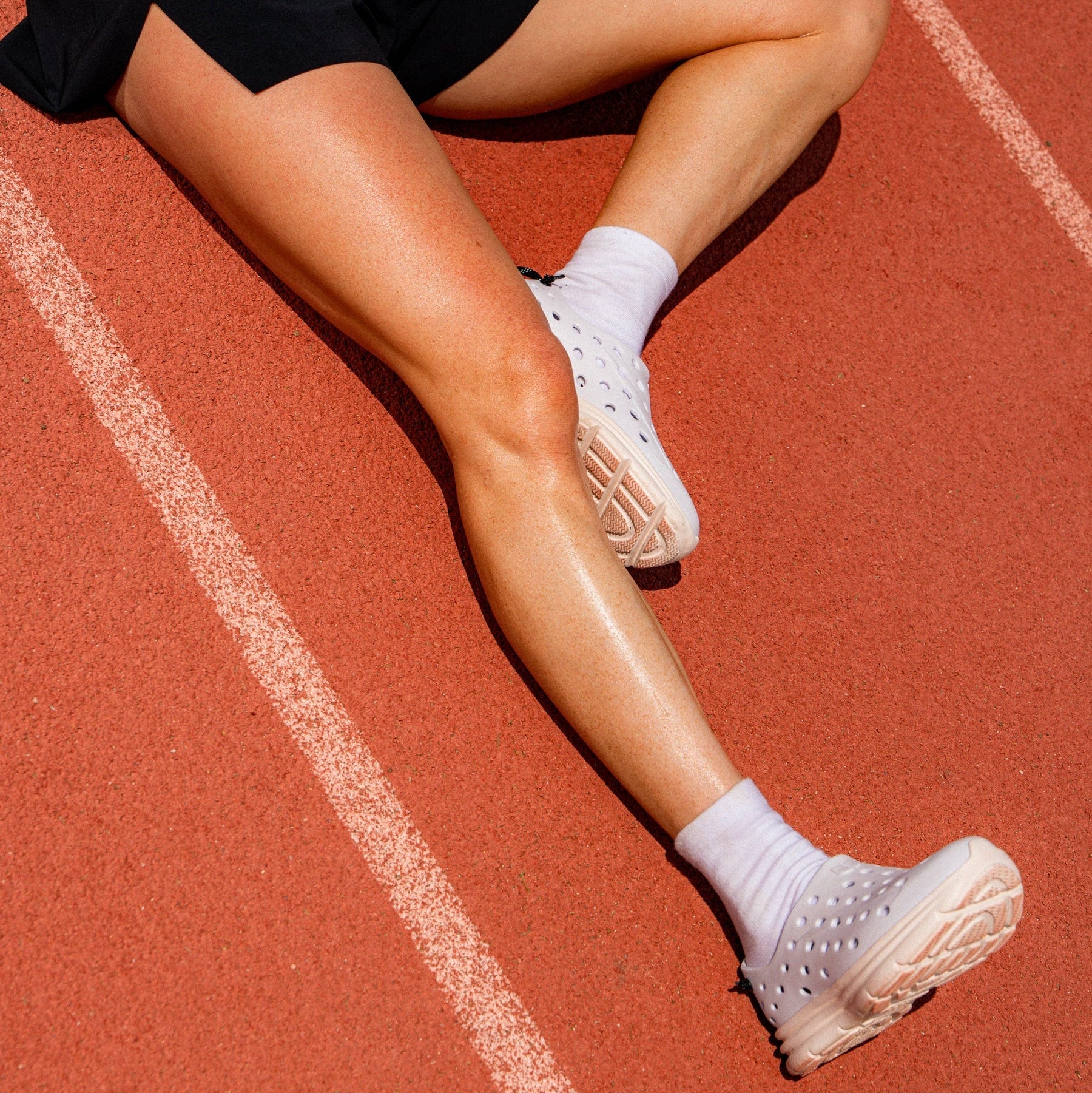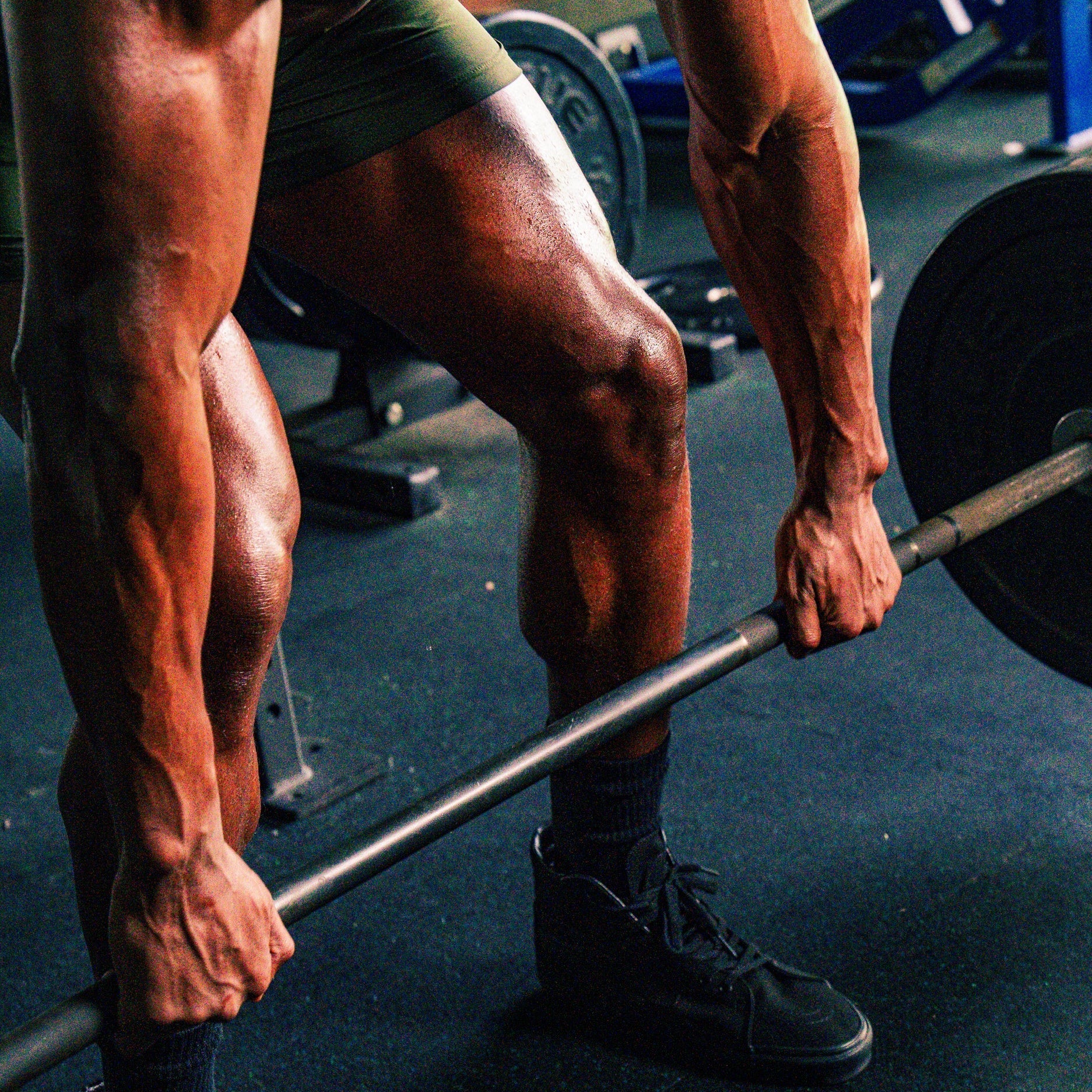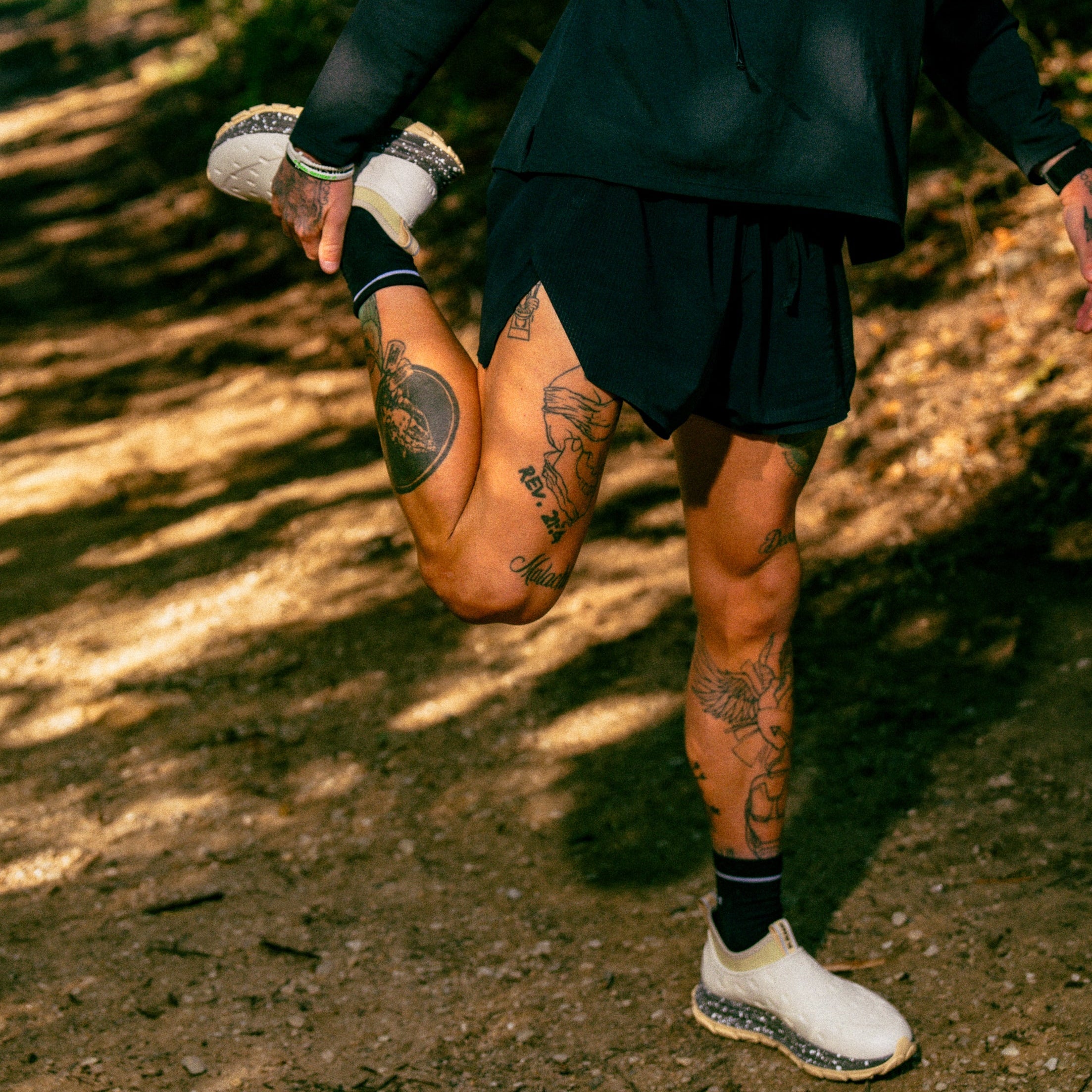Side of foot pain after running: Complete guide for runners
Side of foot pain after running affects countless runners. This discomfort can strike either the inner (medial) or outer (lateral) side of your foot, turning post-run recovery into frustration.
Research shows that 5.7% to 39.3% of runners experience foot pain during their running journey. Your feet absorb forces approximately two to three times your body weight with every step, making them vulnerable to injury.
Most cases of side of foot pain after running respond well to conservative treatment when addressed early. Understanding the causes and solutions can prevent temporary setbacks from becoming chronic problems.
Key takeaways
- Side of foot pain after running can occur on either the inner or outer side and has multiple potential causes, ranging from minor issues to serious injuries.
- The right shoes, including supportive running shoes and recovery footwear, are crucial in preventing and treating lateral foot pain.
- Most cases can be effectively managed with treatments like the PEACE and LOVE protocol, stretching, and strengthening exercises, but persistent or severe pain requires professional medical evaluation.
Understanding side of foot pain in runners
Your feet are incredibly complex, making them vulnerable during running. With every step absorbing two to three times your body weight, it's no wonder foot pain is so common among runners.
Foot anatomy basics
Your foot has two main systems: the outer edge (lateral) handles side-to-side stability, while the inner arch (medial) prevents inward rolling. When running overworks these systems, you feel pain on the corresponding side.
Why runners are particularly susceptible
Runners face a perfect storm of factors related to foot mechanics. Poor running form, sudden increases in running distance, or transitions to uneven surfaces further increase injury risk. As your body compensates for fatigue, different areas of your foot face increased stress.
- Volume: About 1,400 steps per mile add up quickly
- Impact: Each step hits with two to three times your body weight
- Fatigue: Tired muscles change how your foot lands, creating new pressure points
What causes lateral foot pain after running?
Lateral foot pain affects the outside of the foot and can stem from several running-related injuries. Understanding these conditions helps you recognize symptoms early.
Peroneal tendonitis and related issues
Peroneal tendonitis is one of the most common outer foot injuries in runners. These tendons (think of them as thick rubber bands) wrap around your ankle bone and control sideways movement. When they get irritated from repetitive stress, you'll feel pain and swelling along the outside of your foot that may travel up your lower leg.
Wearing ill-fitting shoes or shoes that don't provide adequate support increases your risk. Runners with high arches or supinate (roll their feet outward) are particularly susceptible.
Recovery footwear insight: Peroneal tendonitis recovery benefits from wearing supportive shoes with cushioning that reduces strain on inflamed tendons. The elevated heel design in quality recovery shoes helps shift weight away from stressed peroneal structures while providing the ankle stability needed during the healing phase.
Stress fractures of the outer foot
Stress fractures in the fifth metatarsal (outer foot bone) cause sharp pain on the outside of your foot. These tiny cracks develop when repeated stress exceeds your bone's ability to repair itself. Stress fractures in your fifth metatarsal are a common cause of lateral foot pain in runners.
Pain typically starts as a mild ache that worsens with activity. Without treatment, a stress fracture can progress to a complete break, requiring a longer recovery.
Cuboid syndrome
Cuboid syndrome occurs when a small bone on your foot's outer edge (the cuboid bone) gets irritated or shifts out of place. You'll feel sharp pain along the outside of your foot, especially when pushing off during running.
Research shows cuboid syndrome frequently relates to overuse, foot instability, or abrupt increases in running volume.
Ankle sprain complications
While an ankle sprain primarily affects your ankle joint, it can lead to persistent foot pain on the lateral side. Ankle sprains damage stabilizing ligaments, potentially causing instability that alters how your foot contacts the ground.
Runners who've experienced ankle sprains often develop compensatory movement patterns that increase stress on the outside of the foot, leading to secondary injuries and lateral foot pain.
What causes medial foot pain after running?
The inner side of your foot faces different stresses during running. Medial foot pain often involves your foot arch and supporting structures.
Posterior tibial tendon dysfunction
Your posterior tibial tendon supports your foot arch and controls inward rolling motion. When this tendon becomes inflamed or degenerates, you'll experience arch pain and potential arch collapse. This condition can worsen over time—starting with inflammation and potentially leading to a torn tendon if left untreated.
Flat feet increase your risk by placing extra stress on medial structures, leading to overuse and potential injury.
Plantar fasciitis and arch-related pain
Plantar fasciitis affects the thick tissue band (plantar fascia) that supports your foot arch. While commonly causing heel bone pain, plantar fasciitis can also create arch pain and discomfort along the inner foot.
The condition typically causes sharp pain with your first steps in the morning or after rest. Prolonged running or sudden training increases often trigger symptoms.
Recovery footwear insight: The arch support and heel elevation in specialized recovery footwear directly address plantar fasciitis pain by reducing tension on the plantar fascia. This positioning allows the inflamed tissue to rest more comfortably during your non-running hours.
Medial stress fractures
Stress fractures can occur on the inner foot, particularly in the navicular bone. These injuries cause deep, aching pain in your foot arch that worsens with activity. Navicular stress fractures are notoriously slow to heal and require careful management.
Risk factors and contributing elements
Understanding what increases your risk of side of foot pain after running helps you make informed training and equipment decisions.
Key risk factors
- Training issues: Sudden increases in running distance or intensity, poor running form, and uneven surfaces
- Equipment problems: Ill-fitting shoes, worn-out running shoes (replace every 300–500 miles), tight shoes
- Individual factors: Flat feet, high arches, previous ankle sprain or injuries
Immediate treatment and pain management
When side of foot pain strikes after running, your priority is to protect the injured area, manage pain, and support optimal healing. Following this protocol will help you get back to pain-free running.
The PEACE and LOVE protocol
The PEACE and LOVE protocol replaces outdated rest-and-ice approaches with a balanced plan for smart protection and gradual recovery.
PEACE focuses on early care:
- Protect your foot by avoiding activities that worsen pain but allow gentle, pain-free movement.
- Elevate to reduce swelling and improve blood flow.
- Avoid overusing anti-inflammatory medications and prolonged icing, as these can impede healing.
- Compress with a supportive wrap to control swelling.
- Educate yourself about the healing process and accept that some discomfort is normal during recovery. Seek immediate care for sharp pain that doesn't improve, burning pain, numbness, or tingling.
LOVE promotes active rehabilitation:
- Load the foot gradually with weight-bearing activities as tolerated.
- Optimism matters—maintain a positive mindset to support healing.
- Vascularization through gentle aerobic activities like swimming or cycling encourages blood flow and tissue repair.
- Exercise progressively to restore foot strength, mobility, and balance.
Return-to-running guidelines
Don't rush back. Follow this simple progression to reduce foot pain:
- Week 1–2: Walk 30 minutes pain-free before any running
- Week 3–4: Alternate walking and running (start with a four-minute walk/one-minute run)
- Week 5+: Gradual running progression (listen to your body)
- Stop immediately if: Pain returns during activity, you modify your form to avoid discomfort, or swelling increases after sessions
- Ready to progress? Zero pain during and after each session for one full week
Long-term treatment and recovery strategies
Effective management of side of foot pain after running requires addressing both symptoms and underlying causes.
Strengthening and rehabilitation
Strengthening exercises like towel scrunches, marble pickups, and toe curls build foot strength and stability.
Strong ankle muscles prevent compensatory movements that stress lateral structures. Resistance band exercises, calf raises, and balance training strengthen ankles effectively.
Physical therapy offers specialized assessment. A physical therapist can develop a tailored treatment plan and use manual therapy techniques for soft tissue restrictions and joint mobility.
Stretching and mobility work
Tight calf muscles and restricted Achilles tendon mobility contribute to foot problems. Daily stretching improves blood flow to the affected area and reduces friction points that cause friction blisters.
Professional treatment options
Physical therapists and other sports specialists can identify movement dysfunction and create targeted treatment plans. Custom orthotics may help runners with biomechanical issues.
Prevention strategies for runners
Prevent injuries by addressing the factors that can contribute to side of foot pain after running.
Proper footwear selection
Running shoes should match your foot type and be replaced every 300-500 miles. Supportive shoes for daily wear and recovery footwear, like Kane Revive, provide targeted support when your feet are vulnerable.
Training modifications
Progressive load increases allow feet and toes to adapt gradually. Increase mileage gradually—typically five to 15% weekly, depending on your experience and how well you're recovering.
Surface variety helps prevent overuse injury by distributing stresses differently across your feet and legs. Mix road running with trails, tracks, and other surfaces when possible.
Biomechanical optimization
Running form analysis by a coach or physical therapist can identify inefficient movement patterns contributing to foot pain.
Cadence (steps per minute) affects how forces travel through your foot. Higher cadences often reduce impact forces and may help prevent certain foot injuries.
The role of recovery footwear in healing
Recovery footwear is an important component of foot pain management. While running shoes provide support during activity, recovery shoes address your feet's needs after exercise.
These specialized shoes aren't just about comfort—they're about creating the optimal biomechanical environment for healing.
For lateral foot pain
- Heel elevation reduces stress on the peroneal tendons and the fifth metatarsal
- Lateral support prevents excessive supination that worsens cuboid syndrome
- Cushioned outsole absorbs impact forces that aggravate stress fractures
For medial foot pain
- Superior arch support reduces strain on the posterior tibial tendon
- Heel lift decreases tension on the plantar fascia
- Controlled pronation prevents collapse of medial structures
During the critical recovery window
Your feet remain vulnerable for hours after running as inflammation peaks and tissues begin to repair. Recovery footwear provides support during this crucial period, preventing the compensatory movement patterns that often develop when feet are painful. Kane's recovery shoes are specifically designed with these therapeutic principles in mind.
Discover Kane recovery shoes
The Kane Revive provides excellent support, comfort, and durability for those in need of top-notch recuperative footwear. Featuring an adjustable hook-and-loop single-strap synthetic upper, plush TPR footbed, and durable injected EVA outsole, these kicks come with all the right features to assist you during your rehabilitation journey.
"We have a nine millimeter lift in the heel, which means relative to the forefoot, the rear foot is lifted up about nine millimeters. What that does is provide extra shock absorption in the heel. It provides superior arch support in the mid-foot. We're getting this amazing heel-to-forefoot transfer, which means we're not stressing the foot."
— Dr. Daniel Geller, podiatrist and foot and ankle surgeon
Moving forward with healthy feet
Foot pain after running doesn't have to derail your running goals. Early intervention makes a difference. Address issues promptly with proper treatment, supportive shoes, and smart training choices.
Your feet carry you through countless miles. Take care of them, and they'll continue supporting your running journey for years to come.
Frequently asked questions
How do you treat pain on the outside of your foot after running?
Treatment for pain on the outside of the foot starts with the PEACE and LOVE protocol, followed by physical therapy for biomechanical issues and strengthening exercises. Supportive recovery footwear helps reduce stress on healing tissues during daily activities. Severe or persistent pain may require evaluation from a medical professional.
How do you fix a pain on the side of your foot?
Fixing lateral foot pain requires identifying the root cause through proper diagnosis. Conservative treatment includes following the PEACE and LOVE protocol, and strengthening exercises for foot muscles and ankle muscles. A tailored treatment plan from a physical therapist can accelerate healing and prevent future injuries.
Why is the outside edge of my foot hurting?
Outer edge pain often stems from peroneal tendonitis, fifth metatarsal stress fractures, or cuboid syndrome. These develop from repeated stress, biomechanical issues, or sudden training changes. Flat feet or excessive supination can increase stress on the outer side. Wearing shoes that don't provide adequate support may also contribute.
No content on this site should ever be used as a substitute for direct medical advice from your doctor or other qualified clinicians.


